ANCIENT ASSYRIA AND THE ISRAELITE SCYTHIANS
In this particular article we will discuss the history of the “Lost Tribes of Israel” and follow their ancient migrations into every corner of the Earth. After reading this article, you will certainly learn many new things contrary to your current understanding of the ancestral and cultural identity of many different nations of the World. You will also discover that modern historians and academia have either purposely or mistakenly omitted certain historical information from the contemporary academic education curriculum, resulting in a completely different perspective of ancient history. This has resulted in the belief that the ancient Israelites are either “Lost” in history and/or the assertion that the modern Israeli’s are the last remnant of the descendants of the Israelite descendants of Abraham, Isaac and Jacob – both of which are not true.
It is the intention of this article to provide some detailed information and visual images to help you make the connection between the historical record of the Hebrew Israelites (found in the Holy Bible) and secular history. We will discover that the diasporas of the Israelites at different times and for different reason, has left branches of Israelite descendants scattered in every nation. As a result we will discover that the Israelite branch that migrated into African lands have historical relatives across the Eurasian continent and the Americas. The information provided in this article will also provide support for the fact that the descendants of these Israelite founded many of the early civilizations of ancient times and it was because of their many contributions and prolific progeny in all nations of the Earth that they have been lost to history in fulfillment of the crafty council discussed in Psalms 83:1-7.
Hiding the name and history of the Israelites behind the name of the Scythians, among many other names, has made it difficult to connect the dots between biblical records and modern history but after reading this article it should become very apparent that the Word of Bible is completely accurate and the Israelites were definitely scattered throughout all corners of the Earth into every nation and kingdom, just as the Most High God AHAYAH (I AM that I AM, Exodus 3:13-15) said that they would be. Let’s now begin to discover part the history of the ancient Israelites and their associations with the Scythians and Aryans of secular history.
We will soon cover the details of the causes of the diasporas of the Israelites and where they migrated to later in this article but we will briefly discuss it now. Let’s read a brief summary by National Geographic:

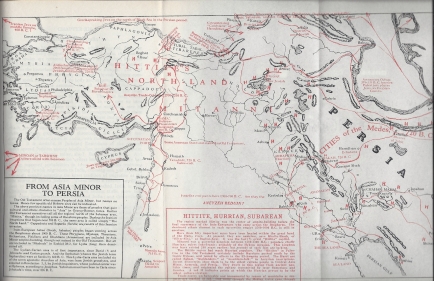
Map of Israelite migrations from Asia Minor to Persia from Allen Howard Godbey’s Lost Tribes a Myth pg.317
During the Assyrian and subsequent captivities of the Israelites, many of them lived as nomads in loose confederations of tent cities. These temporary dwelling of the Israelites (known of Scythians in secular history) were identical to the Succoth temporary dwellings of the ancient Israelites.


Some historians assert that the Scythians or Scythes/Scuths got their name from the fact that they were nomadic tent-dwellers. Like nomads, they traveled around in their “booths”. The name Scythian goes all the way back to the Hebrew word Succoth. Succoth was a town that the Israelites lived in while in Egypt located in the North East delta region. The Israelite Feast of Tabernacles is also known as the feast of Succoth. Succoth means “booth” or “tent”.
• booth (rude or temporary shelter)
• סֻכָּה çukkâh, sook-kaw’; a hut or lair: — booth, cottage, covert, pavilion, tabernacle, tent.
During the feast of tabernacles the Israelites are instructed to make booths or tents/tabernacles, which are temporary shelters constructed of tree limbs and branches. These huts are to be dwelled in for 7 days during the Feast of Tabernacles to remind the Israelites of all the time they spent in the desert as nomads while the Most High completely provided for them.
The nomadic Israelites were known as a very warlike people and it is the warrior nature of the people that caused the Most High god to label and select a “peaceable multitude” of these warlike people to leave and go forward into a hidden land “were never mankind had dwelled” so that they might once again return to the true worship of their God in a distant land – the New World of the America’s and the Caribbean Islands.
THE WARLIKE ISRAELITE-SCYTHIANS AND THE PEACEABLE MULTITUDE
The warlike nature of the Israelite was renown to all nations of ancient history. They were great warriors and their stiff-necks and stubborn character described in the Bible caused them not only to rebel against their own God, but also against every nation around them. The Israelites were often hired as mercenaries or became leading generals in foreign armies that they served because of their familiarity with the art of War. The Israelites who became known as the Scythians and in Persia as the Parthians also even became rulers of many of the foreign lands they migrated or were once enslaved in and founded many ancient empires as a result of their warrior prowess.

Encyclopaedia of Religion and Ethics: Mundas-Phrygians, edited by James Hastings, John Alexander Selbie, PG 652






A Parthian (Iranian) Soldier. Parthians claim Scythian descent and Scythians were Israelites. The Scythians and Persian also referred to themselves as Arya/Aryan
The warlike nature of the Israelites, who became known as the Scythians (among many other bywords, i.e. Parthians, Mongolians, Kara-Khitans, etc.), can be greatly attributed to their worship of Baal. The descendants of the Northern Tribes of Israel began the worship of Baal introduced during King Solomon’s reign and officially adopted it during the subsequent reign of Jeroboam, and they never departed from it.
“And he did that which was evil in the sight of the LORD: he departed not from the sins of Jeroboam the son of Nebat, who made Israel to sin.” – 2 Kings 15:28

High Place of Jeroboam (Temple and Altar Area). “Shortly after Jeroboam had successfully claimed Israel (north), leaving the son of Solomon, Rehoboam, only with Judah (south), Jeroboam made Dan a religious destination. In order to dissuade the people of Israel from going to Jerusalem to worship, Jeroboam created two counterfeit places of worship, installing golden calf idols at each. To go with this new system of worship, and adulterated priesthood and multiple high places, such as those of the pagan nations, were installed throughout the land.”

The Israelites were removed out of “the sight” of the Lord, which is his Holy Land. The “spoilers” to who the Lord delivered the Israelites for their sins were the nations surrounding Israel. After being taken captive by these surrounding enemy nations, the Israelites became known as the Khumri, Cimmerians and Scythians (among many other names). The Israelites dispersed themselves across the whole earth under these different names and carried the idolatrous worship of Baal into all the places they went.
Baal is a god of war and his worshippers adopted the attributes of that god.
BAAL THE GOD OF WAR
The Israelites reached the height of their worship of the god Baal in the land of Canaan during the last half of the reign of Solomon, which caused the United Kingdom of Israel to be divided into two parts.
And he said to Jeroboam, Take thee ten pieces: for thus saith the Lord, the God of Israel, Behold, I will rend the kingdom out of the hand of Solomon, and will give ten tribes to thee: (But he shall have one tribe for my servant David’s sake, and for Jerusalem’s sake, the city which I have chosen out of all the tribes of Israel:) Because that they have forsaken me, and have worshipped Ashtoreth the goddess of the Zidonians, Chemosh the god of the Moabites, and Milcom the god of the children of Ammon, and have not walked in my ways, to do that which is right in mine eyes, and to keep my statutes and my judgments, as did David his father.
The division of the nation of Israel into the northern 10 tribes of the House of Israel and the southern 2 tribes of the House of Judah was primarily based up which tribes preferred most to worship the god Baal rather than the God of Abraham, Isaac and Jacob, I AM That I AM, worshipped in Jersusalem. As a result of this division and the preference of the northern tribes of Israel of worshipping Baal, these 10 tribes we removed from their own land into central Asian territory under the control of the ancient Assyrians and the Persians/Medians. These Israelites who had long practiced paganism in their homeland, brought those same pagan worships of Baalim along with them into the lands of their captivities as well as the subsequent lands they travelled two, either out of free-will, trade, and conquest or because of servitudes and enslavement.
Whatever the case, the pagan worships adopted by the Israelites prior to their captivity in Assyria and Persia greatly contributed to the warlike nature that the Israelite-Scythians of Central Asia were renown for.
There was, however, a peaceable multitude amongst these warrior Israelite-Scythian mercenary nomads, who decided to escape from Central Asian territories by way of the Euphrates River to a distant and hidden country where they might begin to worship the true God of their ancestors again. The journey of this peaceable portion of the warlike pagan “10 Lost Tribes of Israel” is found in biblical account of 2 Esdras 13.
The Israelites originally from the Northern Kingdom of Israel that remained in Central Asian territories eventually migrated into all the Kingdoms of the Old World, from Far East Asia to Western Europe and even deep into Sub-Saharan Africa.
It should be noted that, although many of these warlike Israelite-Scythians migrated further east beyond the Euphrates, there was a “peaceable” portion that travelled by ship on the Euphrates River into the Persian Gulf. The book of 2 Esdras chapter 13 found in the Biblical record known as the Apocrypha records the journey of the “peaceable multitude” of the Ten Lost Tribes of Israel, who became known as the Scythians, into the Persian Gulf and into the Americas and Caribbean (the New World) which was referred to as Arsareth. The following video will provide a brief history of the Northern Tribes and their migration from the Euphrates River of Mesopotamia to the countries of the New World in the western hemisphere.
Indigenous People of the Americas & Caribbean are Descendants of Israelites who Migrated from Assyria, Iraq & Persian Iran

The Israelite Scythians/Aryans not only had a peaceable branch that sailed to the Americas and Caribbean but they also became an immense multitude beyond the river Euphrates. Until this day they have many descendants living among the populations found in the Middle and Far East, from Iran and India into China, Korea and Japan.
DANIEL IN BABYLON AND THE SCYTHIAN-ISRAELITES
The biblical figure Daniel was also aware of the Israelite-Scythians scattered throughout the world. We can be certain of this through the information that we find in the scriptures biblical record, along with a small understanding of geography. After the Assyrian captivity and diaspora of the House of Israel (the Northern Kingdom) the Babylonians came and to the House of Judah (the Southern Kingdom), which included Daniel many other prophets, into captivity as well. Scholars have dated Daniel’s life from 621 B.C. to 533 B.C., his captivity in Babylon beginning in 605 B.C. at age 16. After interpreting the prophesy of the writing on the wall for the son of King Nebuchadnezzar, Belshazzar, Daniel lived to see the Persian conquest of Babylon in 539 B.C. under the leadership of Cyrus when Daniel was 82 years of age.
The importance of reviewing Daniel and the geography of that time period is to better understand geo-political setting when we read the record of Daniel during his captivity in the Neo-Babylonian & Persian Empires. Again, we can be certain that Daniel was aware of the presence ofzzthe Israelites scattered around the world, identified by secular historians as ‘Scythians’, by Daniel quote:
Daniel was fully aware of the Israelites that were near to him in Babylon as well as those in the Babylonian/Persian Empire’s many provinces far off. Many of those Israelite fall under the identification of Scythians, which was an umbrella term used to identify different nomadic peoples, both within and outside of the ruling empires. Again, many of these nomadic peoples identified as branches of Scythians were related to the Israelites (although some were not).

Notice the Scythians (Scyths) in the territories outside of the highlighted Persian Empire under Darius. Also notice that Thrace and part of Macedonia (highlighted in orange in the map above) were included in the territory of the Persian Empire.
It should also be understood that the Scythian-Israelites have very close connections with ancient Assyria/Syria. As stated earlier, it was the Assyrians who removed the Israelites from their homeland and placed them in certain locations within the Assyrian, Babylonian, and Median territories. These Israelites became known as Scythians (among many other names) who were a very warlike nation. The image above of a man named Konon, is identified as a man of Macedonian royalty who came to authority in Syria as well. Notice his appearance and his style of dress and compare it to the image below of ancient Assyrians who wear the conical hat.
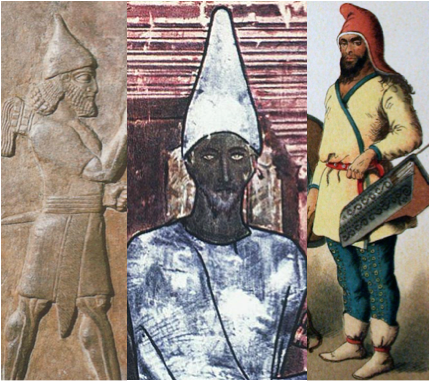
From LFT to RT: An Assyrian soldier, Konon Macedonia & Assyria aristocrat, a depiction of a Scythian
Daniel, having risen to one of the highest government positions, under both the Babylonian and Persian empires, was aware of the peoples that comprised the different territories under the jurisdiction of both empires and thus he was also fully aware of the locations of his people, the scattered Hebrew Israelites.
Further evidence of the Biblical awareness of the Scythian-Israelite presence can be found the records of another Israelite prophet contemporary with Daniel; the prophet Jeremiah.
In his record, Jeremiah is instructed to proclaim towards the North, to backsliding Israel (the 10 Northern tribes) that the out to return to the ways of their God so that he can bring them back to their homeland. Initially, it may seem obvious that Jeremiah was speaking to the area directly North of the Kingdom of Judah, which is the northern Kingdom of Israel.
However, if we understand that the House of Israel was removed from their land many years prior to the time of the prophet Jeremiah, then it is certain that Jeremiah was talking about another area North of Israel that contained a population of Israelites from the house of Israel. If you were to draw a line north from Palestine/Israel on the map below you will arrive to the region of Black Sea, an area populated by a people known as the Sacae/Scythians.
Interestingly enough, the ancient inhabitants of this region have very close associations with the ancient Israelites. The area of the Black Sea region is also comprised of an area known as the Balkans. The Balkans is a peninsula and cultural region that takes its name from the Balkan Mountains that stretch from the east of modern Serbia unto the Black Sea at the east of Bulgaria.

“According to Britannica the Balkans are usually composed of Albania, Bosnia and Herzegovina, Bulgaria, Croatia, Kosovo, the Republic of Macedonia, Montenegro, Romania, Serbia, Slovenia, while Greece and Turkey are often included (depending on the definition)…” – Balkans, Wikipedia
The Balkans were not only an ancient territory that hosted scattered Israelites but it was also an area that became part of the Achaemenid Empire, of which the prophet Daniel was a high ranking advisor of.
“The Achaemenid Persian Empire incorporated parts of the Balkans comprising Macedonia, Thrace, Bulgaria, and the Black Sea coastal region of Romania between the late 6th and the first half of the 5th-century BC into its territories.” – Balkans, Wikipedia
We know that Israelites (particularly the House of Judah) were captive in the Babylonian and Medo-Persian empires of the classical times so it should not be difficult to understand that branches of different Israelite tribes could be scattered in the territories within their empires as well as outside of their borders.
Other ancient historians were also aware of the Israelites scattered presence throughout the world. According to the learned Christian priest of the 4th century AD, Saint Jerome, The ten tribes of the northern Kingdom of Israel were subject to the Parthian’s and that they lives in the cities and mountains of the Medes/Persians. A quote by Josephus, in his book Antiquities of the Jews, supports the history of Saint Jerome as Josephus states that the ten tribes of Israel were to be found beyond the Euphrates River (in the land of Iran and further eastward) as an ‘immense multitude not to be estimated by numbers’.
It is this information, along with the historical support of the Bible, that allow us to come to the conclusion that the Israelite Scythians were part of the Iranian (Aryan) Empire which had taken the Israelite Scythians in to India and further into the Far East.
THE SCYTHIANS HAD REACHED INDIA AND EVEN FURTHER
The Scythian’s travelled as far East as Korea and Japan and as far west as the modern United Kingdom. In fact, many archaeological evidences exist to support the conclusion that the Scythian’s culture was spread across the whole of the Old World; from Europe to Asia. We will discuss and view a few supporting evidences.
In regards to the Balkans Black Sea area that was within the territory of the Achaemenid Persian Empire that we were previously discussing and it’s relation to this vast Scythian territory I have just mentioned, I’ve found some artifacts that help to connect the Balkans (modern Bulgaria-Pannonia) region with Korea as well as many other places.
In a particular documentary in Korea, an effort was made to associate some ancient Korean Silla Dynasty (57 BC to 935 AD) artifacts with the ancient Thracian peoples.
The craftsmanship and designs of the Korean sword are very similar to those found on many artifacts in Thracia.

It should be known that the Thracians had a very intimate relationship with the Scythians that migrated into Thracia from both Turkey/Anatolia/Asia Minor and from the region north of the Black Sea known as Scythia
Besides the sword, another artifact helped connect both the Korean and Thracian artifacts to the Scythian peoples—The triskelion symbol.
The design of the sword, it’s symbols and other artifacts found in the ancient Korean tomb has led many Korean scholars to wonder if Korea’s Silla kingdom has origins in Central Asia by way of the Scythians.

Are Silla Kingdoms Royal roots in Central Asia?

At the Gwoereung Tomb there are four stone statues of humans. One is of a military man, Seokinsang, who is clenching his right hand into a fist and holding a club in his left hand. He wears a Middle [Central] Asian style turban on his head. Compare the Turban on the Seokinsang statue ABOVE to the Turban of Enshi Tusi Imperial City, Hubei, China’s statue of a Miao/Hmong, BELOW.

The true identity of the Scythians of Central Asia seem to be the key to the mystery concerning the connection between Korea and ancient Thracia in the Black Sea/Balkans of Eastern Europe.
The triskelion symbol found on the Korean sword and Thracian artifacts helps us to trace the Scythian presence all over the world which also provides yet another support for the histories of Josephus and Saint Jerome that both agree that many of the Israelite tribes had wandered beyond the Euphrates River into the Far East.

The 10 tribes of Israel migrated to Central Asia after the Assyrian captivity. There they became known as the Scythians and travelled from western Europe to Japan, establishing colonies in every territory in between.
The triskelion symbol and craftsmanship of the artifacts also provides support of the Near-East/Western Asian origins of the Israelites Scythians and their influence from the most distant western lands to the Far East. According to an article on, “the internet portal that represents the voice of the Korean government and which promotes Korea online,” Korea.net says that:
“A gold dagger and scabbard were discovered at the Gyerim-ro Tomb, decorated with various jewels. These works show a style that was popular in ancient Greece, Rome, Egypt and across Western Asia.”

After the Assyrian and Babylonian captivities the Israelite were scattered into all corners of the Earth from Central Asia and they travelled on horseback, being known to modern history as Scythians, taking their customs into all the areas they travelled.
Moreover, other artifacts found in the same tomb, as the Korean ornamental sword marked with the triskelion symbol, have also been agreed to be associated to the Scythians. In speaking of the crowns found inside the tomb, the Houston Museum of Fine Arts, in it’s book, Treasures From the National Museum of Korea, said that:
The similarity in the designs of the gold crowns of Korea’s Silla Kingdom in comparison to the designs of other golden crowns found in Central Asia’s steppe region and Eastern Europe can be attributed to the ancient Scythians. According to The Cambridge Ancient History, the Scythians were very good craftsman and excellent goldsmiths.

Here is five different Golden crowns of Asia. From far LFT: Russia (Sarmat-Scythia), Afghanistan (Tillya Tepe – Scythia), Kazakhstan (Saka-Scythia), Inner Mongolia (Xianbei), Korea (Silla).
The Korea Newsreview, Volume 20 of 1991 published by the Korean Herald also held the same view reflected in their comparison of,
“A Scythian gold crown which is similar in style to ancient Korean crowns from the Silla Kingdom.”

The skillfully decorated Panagyurishte Treasure of Thracia provides us some example of what the mixed group of Scythians and their craftsmanship looked like.
This style of metal-working and craftsmanship was made popular by the Israelite Scythians who wandered into all of the aforementioned regions of the world. In fact, if we follow the triskelion symbol we can also follow the trails of Israel’s wanderings.
The triskelion symbol is found throughout the extent of the Old World; from the Far-East to the British Isles.
Another form of the triskelion symbol, known as the three hares, can be found throughout Europe, the Near-East and the Far-East.

“The [triskelion] iconography spread along the Silk Road, and was a symbol associated with Buddhism.”

The Origin of Pagan Idolatry Ascertained from Historical Testimony, Volume 2, By George Stanley Faber, PG 360
The appearance of the three hares symbol and the triskelion/triquetra in various locations across the Eurasian continent help us to also make associations between the ancient Celts and the Buddhist. According to some researchers, the triskelion icon was a symbol of meditation to both Buddhist and Druids

The Scythian artifact with triskelion symbol in the center (ABOVE LFT) is similar to the Triple Hair Symbol found in the Mogao Caves of Dunhuang, China (ABOVE RIGHT) as well as the Panagyurishte treasure of Thracia (BELOW).

The dispersion of the triskelion/triple hare symbol across Europe and Asia appears to have been the result of the migrations of the Scythians
“The triskelion/magatama symbol is also a common feature of Celtic sacred art such as stone carvings, enamel ornaments, book illumination and knotwork…

LFT: Central triskelion surrounded by three triskelions on Celtic enamel ornament from Derbyshire, CENTER: Silver object from Saint Ninian’s Isle Treasure, Shetland, RT: Irish metalwork showing interleaved triskelions, second century A.D.
… This metaphysical symbol is probably the ‘Caer Sidin’ which was the object of meditation by the Druidic bard Taliesin, as he explains in this verse:

The Caer Sidin, or Circle of Sidon, is strongly associated with the triskele/triskelion symbol and the Phoenician/Scythians

The Mythology and Rites of the British Druids, Ascertained by National Documents; and Compared with the General Traditions and Customs of Heathenism, As Illustrated by the Most Eminent Antiquaries of Our Age, By Edward Davies, PG 296

Triphilliom
A further analysis of the previously quoted poem by the Brythonic poet Taliesin allows us to begin to make an association between the Celtic-Buddhist triskelion symbol and the ancient Near-Eastern region from which some of the Israelite-Scythians migrated into Africa from. The name used in the poem to refer to the three-element circle of Druidic meditation, the ‘Circle of Sidin/Caer Sidin, leads us to ancient Phoenicia.’

The Mythology and Rites of the British Druids, Ascertained by National Documents; and Compared with the General Traditions and Customs of Heathenism, As Illustrated by the Most Eminent Antiquaries of Our Age, By Edward Davies, PG 296
The Circle of Sidin is considered to be the circle of the zodiac, known to the ancient Hebrew Israelites as the Mazzaroth H4216 (Job 38:32), could represent the three elements of Sun, Moon, and Stars or Sun, Moon and Earth.

The Trefoil symbol ABOVE reconnects to Korea. The Trefoil ring pommel of an iron Korean straight sword BELOW.

The hour and minute hands of the watch/clock represent the Sun and Moon respectively while the second hand can be thought to represent the infinite stars of the Great Circle of Heaven that rotates above the circle of earth, influencing all life upon it.

The Hublot Neo-Antikythera watch is another example of an earth centered cosmos being encircled by the Circle of Sidin’s three elements of Sun, Moon & Stars.

The luminary worship of Sun, Moon, and Stars above the Earth inferred by the triskelion symbol and the name ‘Sidin’ in the “Circle of Sidin/Caer Sidin” both recall the ancient Phoenicians and their city Sidon.



 Further confirmation of the assertion that the Caer Sidin/Circle of Sidin triskelion symbol of three elements could represent the Great Circle of the Zodiac in relation to the luminary worship of the Near-East can be found upon the study of the Assyro-Phoenician religion. In regards to the Phoenicians we find that:
Further confirmation of the assertion that the Caer Sidin/Circle of Sidin triskelion symbol of three elements could represent the Great Circle of the Zodiac in relation to the luminary worship of the Near-East can be found upon the study of the Assyro-Phoenician religion. In regards to the Phoenicians we find that:

In speaking of the Phoenician town Sidon and its relation to the Circle of Sidin triskelion, we can find strong support for the association between the Celtic triskelion/triquetra and the Buddhist three-hares symbol when we review the observations of the scholar and Druid priest Godfrey Higgins. According to his research compiled in his book Anacalypsis, Higgins stated that the Buddhist were actually black Jews (Israelites) from India, having Sidon as their capital, that traveled across the whole world and established Stonehenge, the great druidic temple, as a monument to the black Buddhist god.
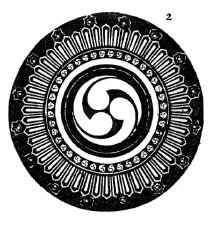
Buddhist Dharma Wheel




“And to the woman were given two wings of a great eagle, that she might fly into the wilderness, into her place, where she is nourished for a time, and times, and half a time, from the face of the serpent.” – Revelations 12:14
“And the children of Israel dwelt among the Canaanites, Hittites, and Amorites, and Perizzites, and Hivites, and Jebusites: And they took their daughters to be their wives, and gave their daughters to their sons, and served their gods.” – Judges 3:5-6
“Son of man, cause Jerusalem to know her abominations, And say, Thus saith the Lord God unto Jerusalem; Thy birth and thy nativity is of the land of Canaan; thy father was an Amorite, and thy mother an Hittite.” – Ezekiel 16:2-3

Phoenician merchant ship, designed by Stefan Malecki, and issued on January 25, 1965, Scott No. 1300
The original Phoenicians were a dark skinned people and the term ‘Punic,’ derived from ‘Poenicus,’ was used to describe the inhabitants of North African Phoenician colonies.


According to the English historian and antiquarian:

Descriptions of Cairns, Cromlechs, Kistvaens, and Other Celtic, Druidical, o Scythian Monuments in the Dekhan, By Meadows Taylor, PG 362

We can find even more evidence in support of the relation between the Celts and Scythians when we examine certain archaeological discoveries. These archaeological discoveries also support the previous quotes taken from the research of scholars that also associated the Buddhist Israelite-Scythians to the Celts/Druids.
We will also discover clear associations between the Celts, Scythians, and the Thracians of the Black Sea area that were spoken of in the Korean documentary video. The previous article also mentioned the vast trade network and interaction between Celts and Scythians. This interaction between distant groups across Europe and Asia was made possible by the Scythians special breed of horses (known as the ‘Heavenly/Flying Horses’) of Central Asia.

Chinese depiction of a “Western Barbarian” with two Ferghana “Heavenly Horses” (one of China’s earliest imported goods)Chinese depiction of a “Western Barbarian” with two Ferghana “Heavenly Horses” (one of China’s earliest imported goods)

Compare the Hallstatt Celto-Scythian memes of triskelion to Korean, Japanese and Chinese triskelion and tomoe symbols.

A System of Ancient and Mediaeval Geography for the Use of Schools and Colleges, By Charles Anthon, PG 707
If Scythians were Celts and Jews that built temples from Indian to Britain, yet they brought stone masonry and stones from Africa, would that not make the Scythians also present in Africa? The historical records of the Punic/Phoenicians provide evidence of the Scythians (labeled as Armenians and Persians) migration into North Africa and Spain while the Celto-Scythian triskelion symbol, again, may also help in supporting that evidence. The following Punic records also supports the Yoruba traditional record of the Assyrian-Scythian (Israelite) refugees fleeing into Africa after the Battle of Carchemish. It is also said that Scythians of the Black/Euxine Sea also freely travelled into Africa.


Memoir Respecting the Kaffers, Hottentots, and Bosjemans, of South Africa Volume 2, by Lieutent Colonel Sutherland, PG 511

“In the ninth year of Hoshea the king of Assyria took Samaria, and carried Israel away into Assyria, and placed them in Halah and in Habor by the river of Gozan, and in the cities of the Medes.” – 2 Kings 17:6


A Persian miniature portraying Buzurjmihr/Bozorgmehr, the Iranian nobleman and minister of the Sassanid king, showing the game of backgammon to the Indian Rajah
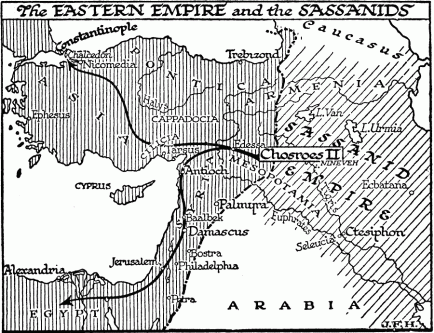
ABOVE: The Persian (Sassanid) and Armenian expedition, from between the Euxine/Black and Caspian Seas, into Europe and down into Africa through Egypt.




 Beyond the Punic-Phoenician history of Asiatics colonizing Africa and Spain the trinity-triskelion symbol provides further evidence to trace the Scythians into the interior of Africa as claimed by Yoruba traditional history.
Beyond the Punic-Phoenician history of Asiatics colonizing Africa and Spain the trinity-triskelion symbol provides further evidence to trace the Scythians into the interior of Africa as claimed by Yoruba traditional history.

Compare the ABOVE Dacian bracelet design to the Berber “Yaz” symbol. They are almost identical and both seem to refer to a ‘trinity’ like the triskelion. The Dacians were a northern branch of Thracians whom Thucydides, an ancient Athenian historian, said neighbored the Scythians and were armed in the same manner.

Compare the ABOVE West African Adrinka symbol of endurance (Hye Won Hye) to the previous Dacian bracelet design and Berber “Yaz” Symbol. The symbols are almost identical and we are discovering that branches of a root people have taken this symbol, and other related trinity symbols, to all the locations they migrated to.
The Triskelion symbol found on Kelto-Scythian monuments and artifacts actually has origins in Central Asia/the Near-East.
The Trefoil, Triskelion, Triquetra, Trinity and its related symbols are found all over the Eurasian continent as well as in Africa. The various locations where we find these symbols help to further establish the presence of Israelites in those same locations.

Report of Tours in the Central Doab and Gorakhpur in 1874-75 and 1875-76, By A. C. L. Carlleyle, PG 126
Not only were the ancient Israelites referred to by the byword of “SAKA” but some tribes of Israelite descent in Africa are also referred to as “SAKA”. According to a particular ethno-historical dictionary titled, The Peoples of Africa, there are at least three different people groups that contain the name Saka in reference to their nation; the Saka & Sakata people of central Zaire and the Sakalava people of Madagascar. Could this be a coincidence or actually a product of the migration of Israelites, identified as Scythians/Phoenicians/Persians/Armenians, into Africa from the Middle East, Mediterranean and Balkans regions? The histories recorded by the previously quoted authors have agreed with the latter as well as that of Professor Dierk Lange concerning the origins of the Yoruba-Oyo Nigerians.

Report of Tours in the Central Doab and Gorakhpur in 1874-75 and 1875-76, By A. C. L. Carlleyle, PG 126

Report of Tours in the Central Doab and Gorakhpur in 1874-75 and 1875-76, By A. C. L. Carlleyle, PG 127

LFT: Royal Scythian, CENTER: Triquetra/Triskelion symbol, RT: High Ranking Chief of Benin/Nigerian military aristocracy wearing the triquetra symbol. BELOW: The Assyrian Royal Seal with a Lion above a triquetra.

Aramaic and Figural Stamp Impressions on Bricks of the Sixth Century B.C. from Babylon, By Benjamin Sass, Joachim Marzahn, PG 182



The Fleur-de-lis motif (red arrow above) in the ancient art of India, and China, symbolizes a divine portal (Nirvana). Also note the Buddha sitting within the triskelion symbol

The fact that the triskelion symbol originated in the Near East/Levant is very important in relation to the Scythic/Celtic presence across the old world because it supports the fact that the Israelites were indeed Scythians (nomadic peoples) who adopted the culture and religion of the Assyrian nation that took them captive. More specifically, the triskelion symbol helps to support the assertion that the Nigerian Yoruba people are indeed Israelites, who were given the misnomer of Scythians or Asiatics (among many other names and bywords), who migrated to West Africa from Assyria, as stated by their traditional history and the research of German professor Dierk Lange.

The Central Bank of Nigerian’s logo ABOVE contains the inverted triquetra/triskelion icon as seen on the Nigerian Chief’s outfit below

From LFT to RT: The triquetra on the helmet of the Chief above, the Royal Assyrian seal with lion and triquetra and the triquetra symbol found on the back of the Chief below.

Note the triquetra symbol within a circle printed on the fabric of this Yoruba helmet compared to the Royal Assyrian Seal symbol


According to the Yoruba history and the research of Dierk Lange, many of the Israelites under Assyrian control left Assyria and the Near East region to migrate to West Africa in 605 B.C.
“The great migration of refugees from the collapsing Assyrian Empire c. 605 B.C. according to Yoruba tradition.”
What caused the Assyrian empire to collapse which in turn caused the migration of Israelite refugees? The Babylonian conquest of the Assyria Empire! At the same time of the great migration of Israelite refugees from Assyria into West Africa, dated at 605 BC, the Battle of Carchemish was occurring.
The battle of Carchemish was indeed a prime reason for Israelites to escape Assyrian captivity and the subsequent Babylonian captivity. Many of the Israelites, who were already removed from the land of Israel by the Assyrians for adopting the practice of paganism, also brought with them those same Assyrian pagan customs, culture and religious practices into West Africa. As a result, we can find many similarities between the peoples of West Africa and the Israelites of the Near East who were called Scythians (among many other names). An artifact known as the Behistun Rock will help us to better understand these similarities between the West African migration of Assyrian refugees and the Israelites of the Near East.

“The Behistun Inscription (also Bisotun, Bistun or Bisutun), (Persian: بیستون, Old Persian: Bagastana, meaning “the place of god”) is a multi-lingual inscription and large rock relief on a cliff at Mount Behistun in the Kermanshah Province of Iran, near the city of Kermanshah in western Iran. It was crucial to the decipherment of cuneiform script.” – Behistun Inscription
The inscriptions on the famous Behistun Rock in Persia, were first investigated last century by Sir Henry Rawlinson. The translation of these inscriptions provides an amazing link between the lost ten tribes of Israel and the captive figures depicted on the Behistun Rock relief. However, before we examine the translation of the text upon the Behistun Rock, I believe that a review of the observations of the Scottish author, artist, diplomat and traveller, Sir Robert Ker Porter.
“In I 822, Sir Robert Ker Porter published a valuable account of the travels which he had made in Georgia, Persia, Armenia, and Babylonia between the years I 817 and 1820, and to him we owe a lengthy description of the sculptures at Behistan, and the best drawing of them which had hitherto been published:
The observations of Sir Robert Ker Porter that led him to intuitively identify the captive figures depicted upon the bas-relief as captive Israelites were found to be quite accurate after he cuneiform text by each figure were translated. Near each of the figures depicted in the bas-relief is an inscription that gives us information concerning who and what we see being depicted.

“Those are the ten tribes, which were carried away prisoners out of their own land in the time of Osea the king, whom Salmanasar the king of Assyria led away captive, and he carried them over the waters, and so came they into another land. But they took this counsel among themselves, that they would leave the multitude of the heathen, and go forth into a further country, where never mankind dwelt, That they might there keep their statutes, which they never kept in their own land.
And they entered into Euphrates by the narrow places of the river. For the Most High then shewed signs for them, and held still the flood, till they were passed over. For through that country there was a great way to go, namely, of a year and a half: and the same region is called Arsareth. Then dwelt they there until the latter time” – 2 esdras 13:40-46

Anglo-Israel: Or, The Saxon Race, Proved to be the Lost Tribes of Israel., By William Henry Poole, PG 437
The Israelites have been identified as Beth Khumri/Omri/Ghomri since before the Assyrian Tiglath Pileser and until at least the time of the Persian King Darius. As early as c. 840 B.C. the Israelites can be found on the Moabite Mesha stele referred to as the House of Omri/Khumri. This same name would also be used by the Assyrian oppressor in their own recorded references to the Northern Kingdom of Israel.

‘MRY MLK YSR’L “Omri, king of Israel” The oldest mention of the name “Israel”, after the one on the Merneptah stone (approximately 1208 BC)

If we also look at the records of the following Assyrian campaigns of Salmanasar III against Israel, we will also find the Israelites referred to as the “House/Sons of Khumri/Omri” (Bit Khumri/Omri). These records are found on an artifact called the Black Obelisk. The Black Obelisk depicts King Jehu of Israel bowing down to the Assyrian Salmanasar and the translation of the text refers to the Israelite king as the “Son of Omri” or “Bit Humria”.
“The mention of nine of the kings of Israel and Judah in the Assyrian tablets is important not only because it verifies the historical reliability of our biblical documents for this period (which would surely be under greater attack by the critics were it not for the Assyrian records), but also because it places Israel and Judah on the larger stage of international politics.” – Israelite Kings in Assyrian Inscriptions, by Bryant G. Wood PhD,
If indeed the Scythians/Saka/Shaka/Sacae who were also known as Khumri/Gimri (on account of the Israelite King Omri) were in fact nomadic Israelites from the Assyrian captivity, it then confirms the traditional history of the Yoruba, and other West African peoples who relate to the Near East Assyrian captivity.
When we return to the history traditional history of the Oyo-Yoruba people, as documented HERE by Professor Dierk Lange, we now have evidence that the great migration of refugees fleeing from the collapsing Assyrian Empire during the battle of Carchemish around 605 B.C. was actually the migration of the Israelites who had become part of the Assyrian Empire and were known as Bet Khumri/Scythians.
The Israelites who made part of the Assyrian Army that was allied with the Egyptians, fled the Near-East region territories of Assyrian control (i.e. Syria, Phoenicia/Lebanon, Israel) into Egypt. From Egypt, these Israelites split into different branches that then travelled into WEST and EAST AFRICA leaving colonies all along their routes.
However, despite the historical evidence that we have already reviewed so far regarding the kinship between the ancient Israelites, the Scythians and the West African peoples we still need more evidence to solidify the connection between the aforementioned people groups. If indeed the Yoruba and other West African groups were actually Hebrew Israelite immigrant to the African continent from ancient Assyria, we should expect to find some Hebrew and Assyrian cultural elements among the West African and Oyo-Yoruba people. Moreover, all these elements should also be related to our initial discussion of the Israelite-Scythian peoples of the Black Sea region as well as the Israelites within the Thracian area of Persian Empire who Daniel the Prophet referred to in the Biblical record HERE (DANIEL 7:9). Let’s begin by review some of the evidence of the Hebrew and Assyrian cultural influences influence found amongst the West African People; particularly the Oyo-Yoruba.
Again, it must be mentioned that battle of Carchemish c. 605 BC between Assyria & Egypt VS Babylon (under Nebuchadnezzar II)
It’s because of King Nebuchadnezzar’s conquest and pursuit of the Assyrians during the battle of Carchemish c. 605 BC that caused the Israelite-Scythian-Assyrian refugees to flee into East and West Africa via Egypt.
Just as a time marker and point of reference, let’s remember that scholars have dated Daniel’s life from 621 BC to 533 BC, and his captivity in Babylon beginning in 605 BC at age 16. The Babylonian captivity beginning in 605 BC resulted in Nebuchadezzar’s victory in the Battle of Carchemish, which resulted in the subsequent conquest of the Kingdom of Judah when Daniel was 16. At this same time during the Babylonian Captivity, many of the Israelites of the northern Kingdom of Israel who had already become apart of the Assyrian Empire c. 721 BC as well as some of the inhabitants of southern the Kingdom of Judah fled Babylonian captivity in the African continent by way of Egypt.
Obviously, these Israelite would have brought many different customs with them in West Africa, we notice many men wearing a particular head-dress. The Aso Oke hat, know in the Yoruba language as a “fila” is a traditional hat of the Yoruba people.
This same Nigerian hat can be seen worn by the ancient Israelites as depicted on the Assyrian Black Obelisk of Salmanasar II. King Jehu is shown wearing a hat very similar, if not identical to the Aso Oke hat of Nigeria.
The traditional hat of the Yoruba and Igbo people seems to have clear origins with the ancient Israelites under Assyrian rulership. Both Yoruba and Igbos are descendants of the Israelite-Khumri-Scythians that fled into West Africa during the collapse of the Assyrian empire c. 605 BC and brought with them many of their ancient customs; the traditional hat being one of them.

The “Lion King” of the Mali Empire, Sundiata Keita, is often depicted wearing a Scythian/Phrygian hat

Other West Africans, such as the Wolof of Senegal, also carry vestiges of Scythian culture and style of dress. Notice the pointed cap that the children ABOVE are wearing that is similar to hats worn by different Nigerian peoples BELOW who have also been connected with the ancient Scythians.
Among a particular group of Nigerians, the Igbo people, the Scythic-Phrygian styled hat is known as Okpu Agu, which in the Igbo language means the “Leopard cap” or the “Hero’s hat”.
Another depiction of Israelites from the Assyrian Empire wearing this same hat can be found on a fresco from the middle Mithraem (Temple of Mithras) at Dura Europos in Syria.
This fresco in Dura Europos of Syria depicting the hat identical to the hat worn by the West African people also relates us to another fresco from Dura-Europos that will allow us to make even more clear associations between the Israelite-Scythians and the West Africans. The conical pointed hat is very similar to the soft fez-like cap pictured above.

We have already quoted Henry C. Rawlinson who stated that the tall pointed headdress worn by the Sacan (Sacae or Saka-Scythian) on the Persian Behistun Rock was a type of Hebrew headdress. Some have even identified this pointed as the “Jewish Hat.”

Historical depictions of Black Jews wearing the pointed Jewish-Scythian hap in the Brother to the Rylands Haggadah 1330
“The Jewish hat also known as the Jewish cap, Judenhut (German) or Latin pilleus cornutus (“horned skullcap”), was a cone-shaped pointed hat, often white or yellow, worn by Jews in Medieval Europe and some of the Islamic world. Initially worn by choice, its wearing was enforced in some places in Europe after 1215 for adult male Jews to wear while outside a ghetto in order to distinguish Jews from others. Like the phrygian cap it often resembles, the hat may have originated in pre-Islamic Persia—a similar hat was worn by Babylonian Jews.” – Jewish Hat, Wikipedia

Frescoe of Konon, son of Nikostratos, standing with priest performing a religious offering in Dura-Europos, Syria.
We can find this very same pointed hat worn among the Yoruba and other West African peoples being that they migrated to West Africa from the Near East regions under Assyrian dominion.

Ovie of Olomu, Ogbon R.L. Oghoro Ogoni I conferring with the Olu of Warri, Ogiame Atuwatse II. Notice the conical headdress and the red garments.
This pointed hat found among the Yoruba/West African people not only related them to their ancient Israelite past but also allows us to support their identification with the Saka/Scythians as well.
If indeed, the Yoruba and other West Africans are actually descendants of Israelite-Scythians from Assyria, we should also find some Scythian cultural traits among these West Africans as well. As a matter of fact, we can find many similarities between the Scythians and the West Africans. We will only go over a few now.
Beyond the clear correlation between the red and gold outfits and pangolin armor of the Scythians and the West Africans, we can also find some similarities between the two groups when we examine another headdress.

Note the ABOVE white headdress of the male Scythian with the protrusion on top of the cap in comparison to the headdress of the West African King BELOW.
The domed cap with the protrusion or spire at the top is worn by both the West Africans (of Nigeria and Benin) as well as the Scythians. A point of great interest is that this hat in not only similar in form but also in function. The purpose and symbolism of this hat among both the West Africans and the Scythians supports the common lineage and share culture/spirituality of the West African and the Aryan-Scythians.

The Yoruba idea of the “ori inu” is synonymous with the ancient Hebrew conception of the “iyshown” (H380) or “little man of the eye”.

Intermediate Yoruba: Language, Culture, Literature, and Religious, Part 2 By Abraham Ajibade Adeleke Ph. D., Abraham Ajibade Adeleke, PG 11
The Yoruba Ade Oba hat known as Orikogbofo (King’s Beaded Crown) is almost identical to the form of the Stupa temples of the East and the Kurgans across Europe and Asia, as well as their functions in connecting the world of the living with the ancestors and the spiritual realm. The same idea represented by the Yoruba Oba Ade cap is also evident in the architecture of the Hindu/Buddhist stupas that also connect one to the ancestor and the spiritual realm.
“Throughout Yorubaland,a person venerates his or her ori-inu (“inner head”), a personal spirit that guides an individual’s destiny… The symbol of the inner head is a small conical object, which is in turn secreted in a larger container with a conical lid called ile-ore, literally, “house of the head.” – From African Shapes of the Sacred: Yoruba Religious Art by Carol Ann Lorenz, Senior Curator, Longyear Museum of Anthropology, Colgate University

The middle ground concept of the West African Ori Inu is reflected in the stupa structures of the East. The middle ground of earth, represented by the stupa building, sits on top of the underworld but is also under the influence of the celestial powers that revolve around it. Similarly, the Ori Inu is in communication with the powers of heaven – the realm of infinity.

The Higher Self, Pineal and Ida in the BELOW diagram of the ‘subtle body’ are representative of the Heaven, Earth and the Underworld of the ABOVE diagrams
– IWAKERI: the Quest for Afrikan Spirituality by Awotunde Yao Zannu Faseyin, By Awotunde Zannu Faseyin, PG 93

The symbolic and fractal association between the African concept of Ori Inu and the eastern stupa/pagoda is apparent in their shape. The African concept of Ori Inu, as the symbolic essence and central focal point of human body, is personified by the Oba (ruler) who is the central focal point of the body of the community. In like manner, the stupa/pagoda (the temple of Baal’s body) is central focal point of worship and meditation.
It is interesting to note that the mounds of the Europe and Asia are paralleled in the Americas. Moreover, being that we have discovered that the Scythian mound builders were actually descendants of the Lost Ten Tribes of the Northern Kingdom of Israel, it becomes much easier to see the relationship between the Scythians and the ancient Native Americans. Many scholars agree that the Lost Ten Tribes were the ancestors of the Native Americans and the Mound Builders.
Despite the fact that there did exist some “White” Scythians or Nomads, being that Edom and his descendants were not blessed with any particular land, the majority of the Scythians of history were indeed the Hebrew Israelites who became known to history as Scythians and Aryans. The Chinese red-haired mummies and the many depictions of White Scythians is a strongly biased portrayal of history in efforts to occult the other history presented in this article as well as to give the credit and glory of one nation to another in order to erase the remembrance of the Israelites from history (Psalms 83:1-8)

LEFT: The Royal Scythian found in a tomb of Kazakhstan compared to a Benin/Nigerian High Ranking Chief dressed in red and gold.
It is interesting to note the many similarities between the ancient Scythians and the West Africans of Benin and Nigeria as it provides further support of the assertion that the Yoruba migrated to West Africa from Assyrian captivity. The correlations between the Yoruba and the Royal Scythians also reconnects us back to Korea and the ancient Scythian presence in the Far East. Let’s look at the Scythians of both Korea and Kazakhstan as well as the West Africans.

Kyrm Altynbekov (CENTER) shows President Nursultan Nazarbayev (LEFT) his family’s reconstruction of the garb of a Saka (Scythian) warrior.


Notice the fringes and borders of blue on this Scythian garment. Very reminiscent of the Native American garments as well of that of the ancient Israelites
The Scythian garb reconstruction of Korea looks extremely similar to the Scythian garb reconstruction of a Royal Scythian Issyk Kurgan tomb of southeastern Kazakhstan.

From LFT to RT: Korean Scythian, Issyk “Sun King” of Kazakhstan
The similarities between the Scythian garments found in Korea and Kazakhstan also support the assertion that the triskelion symbol and the Golden Sword of Korea’s Silla kingdom were the product of the Scythian presence in the Far-East.

The among the Scythians artifacts found in Kazakhstan in 1928 there was a particular golden sword that had a design almost identical to that of the Korea’s Golden Sword of Silla.
Another sword very similar to both the Kazakastan Scythian sword and the Korean Silla sword is the depiction of a sword carried by a dark skinned central Asian speaking to a Dark Skinned Buddhist monk on a Yulin Cave Mural in Anxi County, Gansu Province of China. It is interesting to note that the term “Anxi” is the Chinese name given to regions ruled by the Parthian Empire. According to the author Steven Collins and other scholars, the Parthian Empire of ancient Iran possessed large populations of exiled Israelites identified as Scythians. It would therefore be no surprise to see a depiction of a Scythian holding a Scythian styled sword painted on the walls of a cave in Anxi County, an area of China once governed by an Empire with large populations of Scythians.
Beyond the triskelion symbol, pointed caps and the sword design indicative of the Scythians, the most striking similarities found between the different branches of Scythians is found in the colors and designs of the different Scythian outfits. Red and gold are the colors of elite Assyrian families of military aristocracy. According to the Encyclopaedia Iranica, Volume 5:
The red color of the warriors costume associated with the military aristocracy of the Royal Scythians is strongly paralleled by the attire of the West African’s of Benin and Nigeria’s Igue festival.

Chief Izevbizua Iyamu, the Esogban of Benin, one of the four Town Chiefs, wearing ehaengbehia. Benin City, Nigeria, December, 1981

Like the Royal Scythians mentioned above, the West Africans of Nigeria, Benin and Togo are governed by an Oba (ruler) who is the Supreme Military Commander of what is clearly a military aristocracy. They are also wearing red and gold like the Royal Scythians did as an emblem of their military kingdom.

Notice the triquetra symbol (looks like the letter Y upside down) on the flanks of the hat ABOVE as well as in the Assyrian royal seal BELOW
As we discovered earlier in regards to the Royal Scythians:
“The color red was associated with the military aristocracy and predominated all elements of the warriors costume.” – Encyclopaedia Iranica, Volume 5, PG 758
There are some strong connections existing between the Royal Scythians and the Nigeria/Benin Chiefs. The red regalia of the Scythian military aristocracy is clearly associated with that of the warrior chiefs of West Africa. Another piece of red regalia that allows us make further associations between the Scythians and the West Africans of Benin & Nigeria are the red coral garments.
According to the British academic and archaeologist Ellis H. Minns, the Scythians also used red coral for their ritualistic and royal garments. The particular coral used by the Scythians was almost exclusively found in the Mediterranean Ocean and its rarity and location contributed to its high trade value. The presence of this rare coral among people of Asia, Europe and Africa is a strong indication of their Scythian origins and trade with the Mediterranean region.

The Erdos people of Mongolia also use the Mediterranean red coral. Mongolians are known to have strong Scythian associations.
According to a document by Greenpeace International in October 1989,
Reefs of particular importance have also been found in Catalonia and in the Balearic Islands.Until a few years ago the greater part of the Italian coast had a notable abundance of red coral which developed primarily in the area of Torre del Greco, near Naples and in Sicily.” – The Mediterranean: A Threatened Ecosystem (October 1989), by GREENPEACE International
“She was born with weapons from the head of Jupiter after impregnating the titaness Metis. The Romans equated her with the Greek goddess Athena.” – Minerva, Wikipedia
It is interesting to note that this same red coral, the worship of Minerva, and many other Mediterranean cultural aspects can be found among Sub-Saharan African communities until this day. It would seem to provide strong evidence in support of the fact that many peoples in the African continent, particularly the Yoruba Nigerian, were descended from Israelite-Scythian communities of the Mediterranean and Levant.
“Regalia made of coral or red stone beads are emblematic of the oba’s divine rule. Both coral and red stones are thought to be invested with a supernatural energy, called ase, which is strengthening and protective. The enisen, who make and care for beaded regalia, work in seclusion in consideration of this sacred power. At the annual Ugie Ivie festival, the regalia are washed in cow’s blood to regenerate their potency. This elegant fly whisk, made of coral and agate, is a true luxury item, as its weight—approximately five and a half pounds—makes it altogether impractical to use.” – The Art Institute of Chicago, Kings and Rituals: Court Arts from Nigeria

Beyond the Red Coral connection between the West Africans, the Mediterranean and the Scythians/Phoenicians of the Black Sea and Near-East regions, we can also find other elements of a Mediterranean people surviving in African lands after reviewing a particular history recorded on a Grecian vase. The François Vase is an artifact that provides strong evidence in support of Professor Dierk Lange’s assertion that a Mediterranean and Levantine culture survived in Sub-Saharan Africa.
The historical event depicted on the Grecian François Vase, known as the Kalydonian Boar Hunt is mirrored on a mural inside a Thracian tomb. The Thracian mural has a scene with a horse rider hunting a Boar with his dogs. The Greek Vase also depicts Scythian hunters slaying a boar with theirs dogs in a similar fashion. Could the ancient Thracians and the Greek Scythians have been a related people?
The Scythian’s are indeed recorded in History on the paintings of the Greek François vase as allied hunters with ancient Greek Heros in the Kalydonian Boar hunt. We will find that the name of one of the Scythian archers will indubitably identify the Scythians as being Israelites from ancient Samaria, the capital of the Northern Kingdom of Israel. Moreover, we will discover that these ancient Israelites-Scythians depicted on the Greek vase were not just painted black but are known to have, in fact, actually been black or of the phenotype of what we would identify as Negro. As incredible as that may seem, let’s first examine the Greek Vase and some of the historical Scythian figures presented on it.

Compare the map ABOVE outlining the Scythian Black Sea territory in comparison to the map BELOW of the Cimmerian territory. Note the exact same territories for both peoples who are synonymous. Also be aware that the Cimmerians, who are a branch of the Scythians, are also the Kimmerians.
According to the Online Etymology Dictionary, the name “Cimmerian” is synonymous with the Greek “Kimmerios” which is the name used to refer to the black skinned Kimmerians or Kymry that we previously mentioned.
KIMEPIOS = KIMERIOS = KIMMERIANS/KYMRY

Notice the city Scythopolis, now known as Bethshan or Beit Shean, in the top right corner of the map above. Scythopolis was a city founded by retired Scythian mercenaries and veterans of the army of Alexander the Greek. The Scythians were wandering Israelites, primarily from the Ten Northern Tribes.
According to Gerald Massey, the English poet, Assyriologist and Egyptologist,

The Scythian archers on the image ABOVE taken from the Greek François Vase are depicted wearing their characteristic hat. In like manner, the image BELOW, an iron casting of Idia Iyoba, also depicts her wearing a headdress very similar to the characteristic Scythian hat; a tight-fitted pointed cap with long cheek flaps.

There is more evidence among the West Africans that can support their connection and association with the Mediterranean and Levant by way of the Israelites, Scythians and (or) the Phoenicians. The aforementioned peoples and their migrations have all been associated with the triskelion/triquetra symbol but there is another related symbol that is also indicative of these people — Solomon’s Knot.
Solomon’s Knot is clearly named after Solomon the wise Israelite King but it is also related to the perhaps more familiar symbol, the Swastika. The Swastika is found all over the world, throughout the nations that the wandering Israelites were scattered amongst.
The Swatstika symbol is found throughout the world in the areas where the Israelite-Scythians and Phœnicians travelled; just as the triskelion is. We can clearly find the symbol amongst the Benin/Nigerian Oba Rulers of West Africa, who we have just previously identified to have strong relations with the Scythian Cimmerians (Samarians of Northern Israel) and the militant Royal Scythians of Syria.

Obi Igwe Laud at the Nigerian Ofala Nnewi Festival. Also notice the symbol on his shirt, known as the “Endless Knot” or “Solomon’s Knot” with a square behind it.

ABOVE: Notice Obi Igwe is dressed in the gold and red colors characteristic of the Royal Scythians also has a symbol known as “Solomon’s Knot” on his garment.
“Solomon’s knot in the center of a decorative configuration of four curving arcs is known as a “pelta-swastika” (where pelta is Latin for “shield”)” – Solomon’s Knot, Wikipedia
The Lauburu is another symbol that has clear associations with the “pelta-swastika” also known as Solomon’s knot. The Lauburu symbol also is connected to the Scythians, who were Israelites, just as Solomon’s Knot is received it’s named from a king of the Israelites. The Lauburu is associated with the Gaels who are associated with the Scots, Irish and Celts. The Gaels are also related to the Kymry, who we have previously identified as the Kimmeroi/Kimmerians or the Israelite Samarians from Samaria (the capital of the Northern Kingdom of Israel). Again, it should be noted that the original Gaels were a branch of these Israelite-Kimmerians, referred to as Kymry/Cymry.
“Other ethnonyms prominently associated with the Gaels historically have included Irish and Scots, but the scope of those nationalities is today more complex.”- Gaels, Wikipedia
“The Romans began to use the term Scoti to describe the Gaels in the Latin language from the 4th century onwards… Although the Dál Riata settled in Argyll in the 6th century, the term “Scots” did not just apply to them, but to Gaels in general… Germanic groups tended to refer to the Gael as “Scottas“ and so when Anglo-Saxon influence grew at court with Duncan II, the Latin Rex Scottorum began to be used and the realm was known as Scotland; this process and cultural shift was put into full effect under David I, who let the Normans come to power and furthered the Lowland-Highland divide.” – Gaels

Beyond clan Borthwick, it is interesting to encounter other “Black” or dark-skinned Scottish people. It is of further interest to encounter historical evidence supporting the assertion that King James VI and I, the same king responsible for the King James Bible was also a “Black” or dark-complexioned man, descended from the black complexioned kymry gaels, whom the Romans referred to as Scoti. Moreover, the Kymry Gaels are the same as the Kimmerians, whom we have just previously identified as Scythian and Israelites, provides evidence in support of the claim of a “Black”/dark complexioned Israelite ethnic background for King James VI & I, also described to as “Jacobean”.

King James appears to have been an Israelite from the tribe of Judah (Zarah lineage) by way of the Milesian Scythian Kymry Gaels whom the Romans called “Scotii”
What evidence exist that King James had claims of a Black Hebrew Israelite background? Outside of the Black Scottish clan Borthwick we find another dark skinned family in Scotland known as Douglas of to whom King James was related. In particular King James was related to Sir James Douglas (also known as Good Sir James and the Black Douglas) (c. 1286 – 1330) was a Scottish knight and feudal lord. He was one of the chief commanders during the Wars of Scottish Independence.

Although modern paintings and renditions of the James Douglas depict him to be white, historical records clearly determine Douglas “the Black” to have actually been black skinned
King James VI & I was related to the Douglas family by way of the aforementioned James Douglas “the Black”. James Douglas’ mother, Elizabeth Stewart, was of the daughter of Alexander Stewart how is said to be the direct patrilineal ancestor of King James. James Douglas the Black and King James shared the same ancestor, Alexander Stewart.
“His [James Douglas “the Black”] mother was Elizabeth Stewart, the daughter of Alexander Stewart, 4th High Steward of Scotland, who died circa 1287 or early 1288.” – James Douglas, Lord of Douglas
More support of the assertion that King James was Black can be found in the description of his grandson King Charles II during the Rye House Plot. Charles II is describes as being so swarthy that he was also referred to as “the Black Bird”.
” The Rye House Plot of 1683 was a plan to assassinate King Charles II of England and his brother (and heir to the throne) James, Duke of York. Historians vary in their assessment of the degree to which details of the conspiracy were finalised. Whatever the state of the assassination plot, plans to mount a rebellion against the Stuart monarchy were being entertained by some opposition leaders in England…” – Rye House Plot

It is also very interesting to see another the connection between Scythians and the Kymry Gaels or Scotti. The Kymry Scythians of who the Gaelic Scots were a branch of, were known for their skill as archers. During the Wars of Scottish Independence during the late 13th and early 14th century, an important weapon was introduced that won many decisive victories for the Scots – The Long Bow.
At the end of both wars, Scotland retained its status as an independent nation. The wars were important for other reasons, such as the emergence of the longbow as a key weapon in medieval warfare. – Wars of Scottish Independence
After the rulership and subsequent discomfiture of the noble Douglas family, the close kin of the Stewart family and King James, it would seem that the Holy Bible he produced, which originally contained 80 books (66 books in the Modern King James + 14 Apocryphal book), was an effort to preserve the wisdom of the Black Scythian/Israelite nobility for future generations to have a record of the truth. “White” Europeans had been moving westward, conquering from eastern Europe by way of the Papal Rome. About a century before the publishing of the original King James Version Holy Bible in 1611, Rodrigo Borgia presided as Pope during the exploits of Christopher Columbus (1492) and died in 1503. Alexandre Dumas stated that paintings of the image of Christ since that time had been based on Rodrigo’s son, Cesare Borgia. Within that century the Moors of Europe had almost been completely expelled from rulership in Europe, especially in Spain, as well as the last vestiges of Moorish rulership in Scotland who had turned from nobility into gypsies and “thieves”.

Wild Men and Moors tapestry weave, circa 1400 AD. Note the depiction of Blacks/Moors defending the Black King and Queen inside of the castle from oncoming giant White European “Widman”. The discomfiture of Black European nobility changed the royalty into gypsies and some eventually became slaves in the the trans-atlantic trade.
King James seems to also have been a remnant of the last vestige of Black nobility with the power to preserve an accurate translation of the ancient records of his ancestors being that an opposing English group had already tried to assassinate him during the compilation of the Bible as well as the aforementioned Rye House assassination attempt on his grandson’s to oust the House of Stuart from rulership. We will go into more detail about the King James topic in a separate article but let us continue to review further evidence that the early people of Scotland were indeed dark-skinned people. The word Scotland itself etymologically seems to denote and land of blacks.
“Scoti or Scotti was a name used by Late Roman authors to describe the Gaels… More recently, Philip Freeman has speculated on the likelihood of a group of raiders adopting a name from an Indo-European root, *skot, citing the parallel in Greek skotos (σκότος), meaning “darkness, gloom”… ” – Scoti, Wikipedia
The Greek word Skotos, meaning ‘darkness’, seems to be indicative of the appearance of the original people of that land. Just as the Negroes of Negroland, the Scots of Scotland were also a black/dark people and the land was named after their eponym. Further support for this affirmation can be found in the Irish and Scottish traditional histories, which both state that the original Scots were partially Egyptian.
“It is also worth noting that eponymous characters were created in medieval Irish pseudo-histories: Scota, described as an Egyptian princess, and her husband Goídel Glas… In their own national epic contained within medieval works such as the Lebor Gabála Érenn, the Gaels trace the origin of their people to an eponymous ancestor named Goídel Glas. He is described as a Scythian prince (the grandson of Fénius Farsaid), who is credited within creating the Gaelic languages. Goídel’s mother is called Scota, described as an Egyptian princess (some modern writers associate her with Meritaten). The Gaels are depicted as wandering from place to place for hundreds of years; they spend time in Egypt, Crete, Scythia, the Caspian Sea and Getulia, before arriving in Iberia. It is here that their king, Breogán, is said to have founded Galicia. The Gaels are then said to have sailed to Ireland via Galicia in the form of the Milesians, sons of Míl Espáine. The Gaels fight a battle of sorcery with the Tuatha Dé Danann, the gods, who inhabited Ireland at the time… ” – Gaels, Wikipedia,
In regards to Scota’s husband Goidel Glas the Scythian Prince, it should also be noted that he is also known as Míl Espaíne (the Irish version of the Latin Miles Hispaniae, meaning “Soldier of Hispania”). Before Arriving in Spain, he is recorded to have been a soldier in Scythia and Egypt before settling in Iberia. He is the mythical ancestor of “Son’s of Mil” or Milesians. He also would appear to be a descendant of the tribe Judah-Zarah, which, if true, would make provide clear evidence for Israelite origin of both the Milesians and a branch of the Scythians.
![]()

“By the 6th century BC, Miletus had become a maritime empire, and the Milesians spread out across Anatolia and even as far as the Crimea and Olbia, Ukraine, founding new colonies.” – List of Ancient Milesians, Wikipedia
The Basque language has been found to be related to Aryan and Semitic languages. The Scythians, also known as Aryans, who have been identified as Shemitic/Semitic Hebrew Israelites are the source of the kinship between the Basque, Aryan & Semitic tongues
The Celtic design ABOVE can be compared to the knot design on the walls of the Nigerian Oba’s house BELOW, as well as the design on the two combs from the Edo people of Nigeria.
“Imbolo” describes the knot design on the textiles of the Kuba people of Congo.” – Solomon’s Knot, Wikipedia
The fact that both the Celtic and Congolese knot designs are related to Solomon’s Knot, as well as the fact that the name of the Knot “sigillum Salomonis” (seal of Solomon) being derived from an ancient Israelite King seem to be indicative of the Mesopotamian origins of the symbol.

Compare the Beaded Mask (Mukyeem) from the Kuba Bushing People of Congo to the depiction of modern Basque (BELOW) in traditional clothing.
In regards to the Congolese Kuba peoples’ “Elephants’ Defense” design and its association with the Pythagorean Theory, it is very interesting to note the origin of the mathematical ideas that produced such designs. In our efforts to prove the connection between the historical nomadic Scythian peoples and the ancient Hebrew Israelites that were scattered into all kingdoms of the earth, we have followed some branches of these Israelites-Scythians into Sub-Saharan Africa. Moreover, we have already proven that the BANTU BRANCH OF AFRICAN PEOPLE in WEST and EAST AFRICA are indeed descendants of Hebrew Israelites. This is an important fact to know and fundamental in order to understand the association between the Congolese Africans and the Pythagorean mathematical principles encoded in their design. These “pythagorean” mathematical principles encoded within the artistic designs of the dispersed Israelite Scythians is indicative of their awareness of the idea of metempsychosis or the transmigration of souls.
A simplified explanation is that the pythagorean symbols encode the idea of “infinity” and that life and energy continue on indefinitely; even after death. This also means that they were aware of the existence of alternate dimensions/realms beyond normal human sensual perception and they devised various methods to commune with the realms of infinity by way divinatory systems (some of which utilized pythogrean mathematical principles). This idea is connected to the idea of SQUARING THE CIRCLE/COMPASS.
It should again be stated that the ancient tribes of Northern Israel and the “Jews” of the southern kingdom of Judah have many descendants that can be found amongst the populations of Sub-Saharan Africans; including the Kuba Peoples of Congo. It is no wonder that these Israelites/Jews are familiar with Pythagorean mathematical principles because historians such as Jospehus as well as modern academic Scholars revealed that certain branches of the ancient Israelites could be considered as Pythagoreans themselves.
Pythagoras, was a Greek and we know that the knowledge of the Greeks was primarily a product of Hyksos-Israelites Egyptians and Phoenicians who educated the ancient Greeks (i.e. Cadmus and the Alphabet, Cercrops founding Athens, etc.. Some wisdom of the latter Greeks can perhaps be credited to the actual Hamitic Mizraim Egyptians, such as in the case of the Athenian Solon and is journey to Egypt to find solutions to Grecian proplems, however, we have also discovered that the WISDOM OF THE EGYPTIANS that the Greeks inherited were actually a product of Abraham instructing the ancient Egyptian priesthood in the understanding of Astrology and Babylonian mathematics, being that Abraham was from Ur of the Chaldea/Babylon. Therefore it is of no surprise to find the same mathematical principles credited to the Greek Pythagoras, to have origins in ancient Babylon.
It is also very interesting to note the similarity, not only between the Celtic Foundation Knot and the African Congolese “Elephants’ Defense” design, but also between the African Elephants Defense and the Hindu Swastika.
The Hindu god Ganesh and his association with the Swastika are also related to the ancient Buddhists. The Scythians that entered into the continent of Africa also colonized Asia and Europe, introducing the Swastika and the religious philosophy behind it, into every country they travelled to.

The ceremonial fan of the goddess Oshun of Ifá and Yoruba religions is comparable to the Buddhist ceremonial fans. The original Buddhists were descendants of the same Israelite Scythians that were also the progenitors of the Scythian branch that migrated into Africa.



The Chinese cultural folk hero, minor folk diety and Buddhist monk, Ji Gong (济公) the “Chan Master Daoji”, is often depicted holding a fan and wearing a conical Scythian-like hat with the Chinese character Fo (佛), meaning “Buddha”. His appearance matches that of the Negro Scythians found in West Africa that also use the fan of Oshun.
The Tibets also wear another hat that connects them to the Scythians of Nigeria.


The Mongolians are associated to the Tibetans and Africans by way of the Scythians. The trident like hat of three points is almost identical to that of the Tibetans and West Africans
Returning back to the Swastika symbols found among the Scythian peoples we have identified from European, African and Asiatic backgrounds, we find that this symbol was indicative of Solar and fertility worship. The Scythians and their related branches were known to be Solar Baal worshippers and often used the Swastika (or similar symbols) as their emblem.

Ax of Kimmerian culture (Aryana~Aratta) baring the Swastika design

The Nigerian Ugie carnival dancers wear outfits very similar to the Basque Ioaldunak dancers of Spain/France BELOW who represent ancient giant Moors of Iberia know as the “Mairu”.
The Nigerian Ugie Carnival dancers are descendants of the same people who became known in European mythology as “Brownies,” Moors, or by the Basque as Mairu.
“Legends also speak of many and abundant… mairuak (builders of the cromlechs or stone circles, literally Moors)” – Basques, Wikipedia
According to the previous map and history we’ve covered, a branch of the Israelite-Scythians from Persia migrated into Africa during ancient times. We can find many similarities between the Israelite Scythian fire worshipping nation and many different African nations with Israelite associations; the Yoruba of West Africa in particular.

Earlier, it was mentioned, in the Wikipedia definition of the Jewish hat, that the pointed Jewish cap resembles the Phyrgian cap.
The Jewish Pointed hat worn by the West Africans and the ancient Israelites connects us to the Phyrgian cap worn by the Scythian people who lived around the Blacks Sea and Balkans region of Eastern Europe. Identifying the Yoruba/West Africans as a branch of Israelite-Scythians allows us to associate them with the Scythians of the Balkans region who are also of ancient Israelite origin.

“The Phrygian cap is a soft conical cap with the top pulled forward, associated in antiquity with several peoples in Eastern Europe and Anatolia, including Phrygia, Dacia and the Balkans.” – Phyrgian Cap, Wikipedia
Within the Balkans region included in the ancient Persian Achaemenid Empire, if we return back to the location that we mentioned in the beginning of this article, Thracia, we can find a fresco containing a depiction of the Phygian cap being worn by ancient Israelite-Scythians.
Notice the man in the far right of this picture wearing the Phrygian cap. Also note his skin tone in comparison to the man on the far left of this fresco wearing the Scythian hat.

The Smurfs cartoon characters seem to be based on the ancient Scythians of Europe. Their Phrygian caps are clearly indicative of their Scythian associations.
Moreover, based on our previous historical understanding of the Scythians, the black and blue appearances of the Smurfs seem to be indicative, not of the black plague, but rather the black Scythian peoples that conquered different areas of Europe. Many of the Scythians entered into Europe from Eastern lands as well as the Levant but many other Scythians, who had already migrated into African lands, travelled from Africa into southern Mediterranean countries before migrating deeper into Europe. These Africa Scythians, who originally came from ancient Assyrian territories and Northern Israel, also wore the Phrygian cap like the Smurfs. 








The story of the Scythians is much to broad to cover in its entirety in this article I hope we have clearly demonstrated the connection between the Israelites and the Scythians. More specifically I hope the connection between the northern tribes of the House of Israel (also known as the “Lost Tribes”) and the Scythians can be seen through the research previously presented. The Israelites, known to history under the byword of Scythians, travelled all over the Old World and even migrated into the New World. We will cover the connection between the Scythians and the tribe of Dan as well as the travels of the Scythian-Israelites into specific areas of the earth such as Japan.

Interesting to note that the Scythian not only traveled to Japan but they were also the biggest importers of Cannabis in all the countries they travelled to. ABOVE is a picture of a Kofun in Japan showing Scythians and Cannabis leaves
The information presented in this article should also have provided both textual and visual evidence in support of the research of Professor Dierk Lange. 



![]()

Assyria (which included the land of Israel) and Egypt were invaded by Babylon during the Battle of Carchemish in 605 BC.
Professor Dierk’s conclusions that the Yoruba and other related peoples of West Africa were in fact Israelite captives and mercenaries of the Assyrian empire during the Battle of Carchemish in circa 605 BC (the time of Jeremiah the prophet and his contemporaries). 

The Battle of Carchemish in 605 BC provided and opportunity for the Israelites of the Northern Kingdom of Israel, as captives and mercenaries, to migrate into Egypt. During this time, Jeremiah prophesied against Egypt (Jeremiah 46, & 2 Chonicles 35:19-12), Assyria’s ally again Nebuchadnezzar’s Babylon, stating that Egypt would be destroyed by Babylon and told the Israelites to go to Babylon rather than to Egypt where they would be killed. Of course, Jeremiah’s prophesy came true and Egypt was delivered into the hands of the Babylonians.
Thus, the conquest of the Babylonians in Egypt led to a further dispersal of Israelites deeper into the African continent where a particular branch would ultimately settle in West Africa/Negroland.
The historical validity of the Oyo-Yoruba’s (an other related groups) connection with ancient Assyria makes it very interesting to find a cultural heritage website of Nigeria named “ASIRI” Magazine.
The name “ASIRI” is actually a word used in reference of the ancient Assyrian captives, according to England’s Oxford University:
Furthermore, according to the assyriologist Claude Hermann Walter John’s of Queen’s College, Cambridge University, these Bit Asiri captives were indeed Shemitic. The Shemite Near-East origins of the Bit Asiri supports the conclusion of their historic Israelite heritage.
It therefore seems quite evident that the Biblical and secular histories both agree upon the ancient Israelite, Scythian and Assyrian origins of many West African people. Professor Lange’s research and the traditions of the Yoruba people themselves support the historical fact of their claim of an Israelite migration into West Africa by way of Egypt and perhaps also Saudi Arabia and Yemen, from the ancient Assyrian territories, which included the land of Canaan/Israel where other Israelite communities already existed (click EAST AFRICAN ISRAELITES).
Moreover, the research of Professor Lange also mentioned that associations have been made between the Yoruba of Nigeria West Africa and different ancient Mediterranean Israelite cultures.
Although this topic was not addressed in detail in this article, adequate information has been present regarding the connection between the Yoruba and Mediterranean cultures; the Scythians/Kimmerians/Samarians in specific. The images and information previous covered supports Dierk’s assertion that, “a culture of the ancient world survived in Sub-Saharan Africa,” demonstrating West African historical relations with Greeks, Indo-European Scythians, Carthagians/Phoenicians and Israelites peoples.

Vestiges of Mediterranean culture can be found among West African peoples, such as this ABOVE comparison of Greek Xiphos & Roman Gladius on the LEFT with the sword of a West Africa warrior depicted on a Benin Bronze plaque on the RIGHT.

The origin of Iron working began in the Levant and was imported into the Mediterranean and Africa by the Phoenicians/Scythians/Israelites. The art of iron and steel working fueled the Bantu Expansion in Africa and the greater Israelite expansion, throughout the entire world.

Israelites in Africa produced steel 2000 years before it was ever produced in Europe. Moreover, they produced it with all natural materials and a clay furnace. Image taken from Jet Magazine Dec 21, 1978, Page 56
The craftsmanship of the Scythian artifacts found all over the Old World are a tribute to their Near-East Israelite and Assyrian origins. Their ability to craft metals in an artistic fashion is clearly due to their long history of iron working and metallurgy.
Many of the descendants of these West African branch of Israelites were taken into the western hemisphere during captivity in the Trans-Atlantic Slave Trade of the 15th through 19th centuries as a result of the sins of their ancestors in their worship of Baal/Moloch/Orixás and their practice of Vodoun/Voodoo and other forms of witchcraft and divinations. As a result they are scattered throughout the America’s and Caribbean Islands, largely unaware of their history or scattered ancestral relatives worldwide. The majority of West Africans, and the people of the world in general, are completely unaware of their most ancient cultural heritage as descendants of the Lost Tribes of Israel—the people of the Book/Bible.
“The sin of Judah is written with a pen of iron, and with the point of a diamond: it is graven upon the table of their heart, and upon the horns of your altars; Whilst their children remember their altars and their groves by the green trees upon the high hills. O my mountain in the field, I will give thy substance and all thy treasures to the spoil, and thy high places for sin, throughout all thy borders. And thou, even thyself, shalt discontinue from thine heritage that I gave thee; and I will cause thee to serve thine enemies in the land which thou knowest not: for ye have kindled a fire in mine anger, which shall burn for ever.” – Jeremiah 17:1-4
“Therefore will I cast you out of this land into a land that ye know not, neither ye nor your fathers; and there shall ye serve other gods day and night; where I will not shew you favour.”- Jeremiah 16:13
“And I will make thee to pass with thine enemies into a land which thou knowest not: for a fire is kindled in mine anger, which shall burn upon you.” – Jeremiah 15:14
“Yet the number of the children of Israel shall be as the sand of the sea, which cannot be measured nor numbered; and it shall come to pass, that in the place where it was said unto them, Ye are not my people, there it shall be said unto them, Ye are the sons of the living God. Then shall the children of Judah and the children of Israel be gathered together, and appoint themselves one head, and they shall come up out of the land: for great shall be the day of Jezreel.” – Hosea 1:10-11
The Israelite are Scythians! The travels of the Israelites as Scythians into the Far East, Southeast Asia/South Pacific Islands, Europe and the Americas will be covered in further detail in separate articles. Please read other related articles to gain further understanding concerning the Israelites as Scythians, their adventures and their fall to the worship and dissemination of Baalism.
Question comments concerns?
Contact: NasiResearch@Instruction.com
OTHER RELATED TOPICS
Baalism: The worship of War and the Sword
The Bantu Branch of Africans are Hebrew Israelites I
The Bantu Branch of Africans are Hebrew Israelites II
Black Buddha Israelite & The Israelite Buddhist
Indigenous Peoples of the Americas and Caribbean are Israelites
The Israelite Fire Nation: Chiyou and the Battle of Zhoulu


















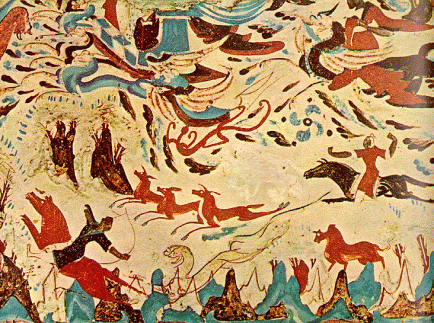





































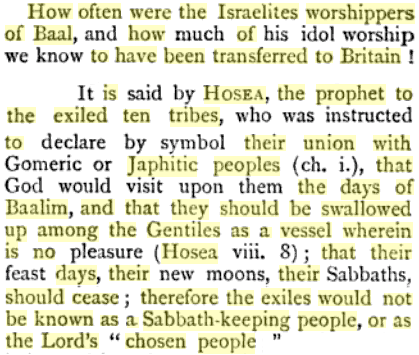








































































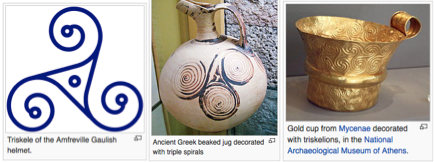































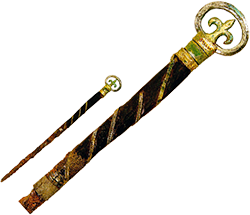






















































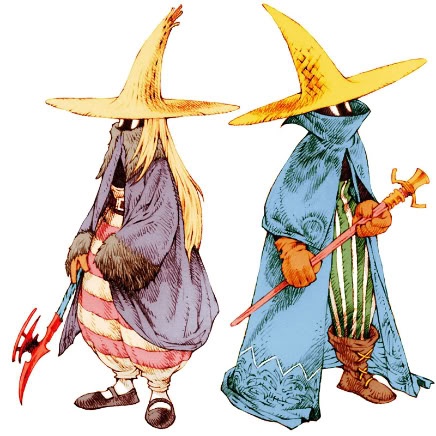






































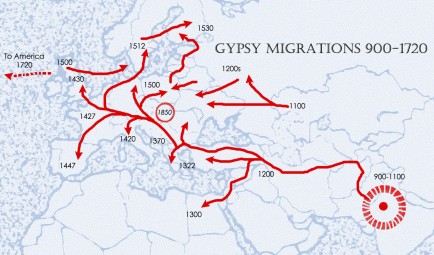


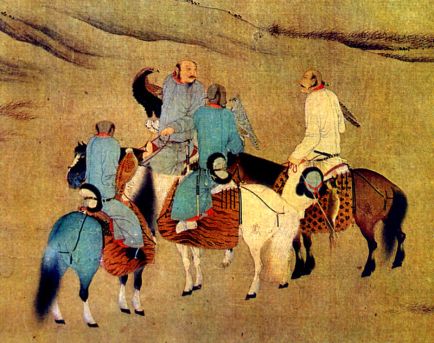






















































































































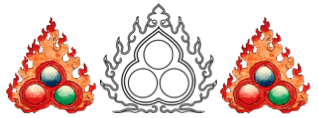


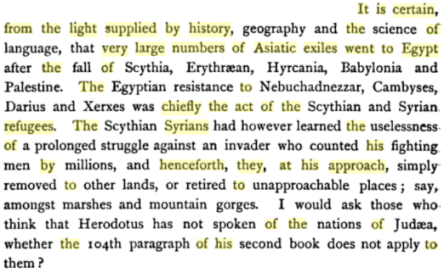



























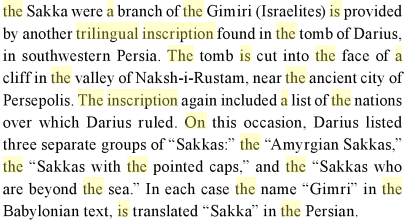




















































































































































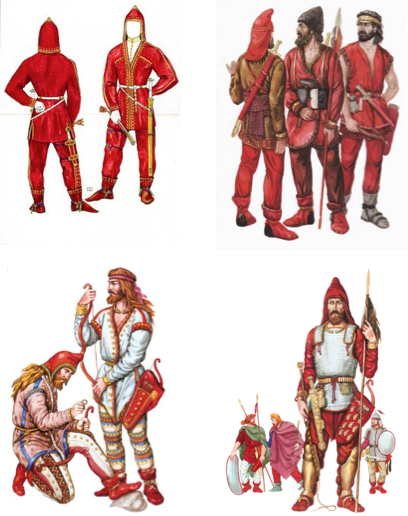





































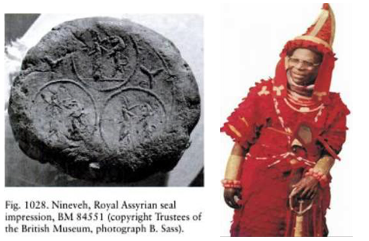



















































































































































































































































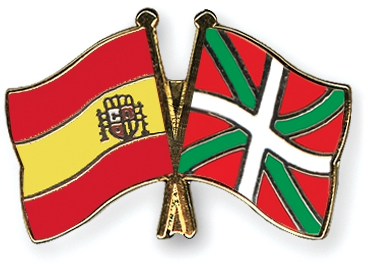
























































































































































Shalom Ahki
Are you saying that tribes like the Massai and the LUO are Hebrew? when it seems they are not. From DNA they are Hammite. What are you views on this: https://www.youtube.com/watch? and v=GMhW32RLmnwhttps://www.youtube.com/watch?v=DAGfW0DtNZY , because you seem to also state that “native americans” are Hebrew. There does not seem to be any BIBILCAL proof of this (from my little research). YES there were Hebrews who travelled to the so called “new world”, but I don’t think the “native Americans” were Hebrews as you state in some earlier articles.
I thank you for this resource there is lots to make one think.
LikeLike
Shalom. I am presenting information of what other scholars and authors have observed and stated about the Massai, Luo and many other people in the world.
“And the LORD shall SCATTER THEE AMONG ALL PEOPLE, FROM THE ONE END OF THE EARTH even unto the other; and there thou shalt serve other gods, which neither thou nor thy fathers have known, even wood and stone.” -Deuteronomy 28:64
“And I scattered them among the heathen, and they were dispersed through the countries: according to their way and according to their doings I judged them.” – Ezekiel 36:19
The above precepts clearly state that we should be able to find Israelites among ALL NATIONS. Again, I am only presenting information and screen shots of books that I believe support the biblical record and allow for the remnants of the Israelites and gentiles alike (whichever identity resonates with the recipient) to understand the biblical record/history is accurate.
In regards to your statement and the videos you shared regarding DNA, i’d like to say the following. It must first but understood that scripture states that not even the angels can properly identify the sheep from the goats and that only Christ will do that, so DNA (although i have loosely used DNA results in one of my blogs as a reference point) cannot be completely accurate (of which geneticist have themselves stated). Moreover, if DNA results were completely dependable it would make it impossible to differentiate between Jacob and Esau genetically through patrilineal or matrilineal lines because they were brother; twins at that. Therefore the genetic markers between the lineages would be the same. I hope you see the challenge that would present and therefore why Christ same that he will separate the sheep from the goats among all nations:
“When the Son of man shall come in his glory, and all the holy angels with him, then shall he sit upon the throne of his glory: And before him shall be gathered all nations: and he shall separate them one from another, as a shepherd divideth his sheep from the goats: And he shall set the sheep on his right hand, but the goats on the left.” – Matthew 25:31-33
That being said, I am not dismissing the fact that their are actually Hamites in those areas but based not the bible record and it’s various examples of how Israelite quickly overpopulate the areas the reside in, ancient egypt and persia being an examples, and the high frequency of israelite culture found among the modern Massai, Luo and other nations, on top of the various non biblical scholarly research that corroborates the same israelite influences found among the people, as well as the historical migrations of the israelites that i covered in the East African Israelites article here:
https://arianasiresearch.wordpress.com/2015/10/22/east-african-israelites-of-zanjiland/
it should not be difficult to see how that is possible. Moreover, in the above link to the East African Israelites blog, I present some detailed information regard Israelites in the lands of the Cushites, modern day known as Ethiopia. Does that mean that all ethiopians are Israelites and that no seed of Ham is in that area; of course not. However, based on the biblical record as well as the plethora of quotes I’ve present from secular and some specific non biased sources, one cannot deny the fact of the heavy Israelite presence among those populations, historically. It is up to the individual reader to decide what they believe is true or not based on the information present and all I am doing is presenting information of what the Bible and other people are saying. Although you didn’t knot ask the question, there is still the scenario regarding the shared DNA between the Lemba and the”Jewish” kohanim. I will be going into detain about that as well which is why i just layed the foundation article to that understanding with this Scythian Israelites note.
In regards to your statement about the Native Americans, Yes, I am completely certain that they are descendants, primarily of the Northern tribes and I have already present substantial evidence of that in the Article and video and I haven soon much more articles to present in the near future to make full proof of that. I will also be going into full detail regarding specific native and americas the caribbean and their connections with certain tribes of israel as well as the pre-Columbian contact between the house of israel and the house of judah when they were reunited in the americas and caribbean as detailed by Ivan van Sertima in his research about the Olmecs in the book they came before Columbus, and who Clyde Winters also connects with the Shang chinese and Manding/Mende west africans, more specifically, Abu Bakr II, the ruler and relative and his successor, the famous Mansa Musa of Mali, whom are Israelites. My future blogs and videos will detail these israelite connections beyond any shadow of a doubt. If you don’t think that they are that doesn’t mean that they are not. present information in support of your thoughts as I have and will continue to do with mine as we are commanded to do in 2 Timothy 4:5 & 1 Thessalonians 5:21. Thank you for your feedback and I hope I addressed all of your queries. Shalom
LikeLike
omfg !! this research is very valuable and helpful your tying most of the scattered clues together for me thank you for sharing your research much love vry unselfish of you and don’t think people not out here searching for this stuff n this website is a key and i appreciate it and your effort to get it out answered most of my questions ive been googling for months n u got it all together on one site love peace n blessing to u bro n thanks
LikeLiked by 1 person
I was recommended this website by my cousin. I am not sure whether this post is written by him as nobody else know such detailed about my difficulty. You are incredible! Thanks!
LikeLike
First off I want to say superb blog! I had a quick question in which I’d like to ask if you don’t mind. I was interested to find out how you center yourself and clear your head before writing. I have had a difficult time clearing my thoughts in getting my ideas out. I truly do take pleasure in writing however it just seems like the first 10 to 15 minutes are wasted simply just trying to figure out how to begin. Any ideas or tips? Thank you!
LikeLike
Only wanna remark that you have a very decent web site, I like the pattern it actually stands out.
LikeLike
Reblogged this on Black History & Culture.
LikeLike
Quality articles is the crucial to invite the users to
visit the web site, that’s what this web site is
providing.
LikeLike
Hey There. I discovered your blog using msn. That is a really smartly written article.
I’ll make sure to bookmark it and come back to read extra of your useful info.
Thank you for the post. I will certainly return.
LikeLike
I was excited to find this great site. I need to to thank you for ones time for this particularly wonderful read!!
I definitely liked every part of it and I have you saved as a favorite to look at new stuff on your website.
LikeLike
I am really loving the theme/design of your web site.
Do you ever run into any web browser compatibility problems?
A handful of my blog visitors have complained about my website not working correctly in Explorer but looks great in Opera.
Do you have any suggestions to help fix this problem?
LikeLike
I don’t even know how I ended up here, but I thought this post was great.
I don’t know who you are but certainly you’re going to
a famous blogger if you aren’t already 😉 Cheers!
LikeLike